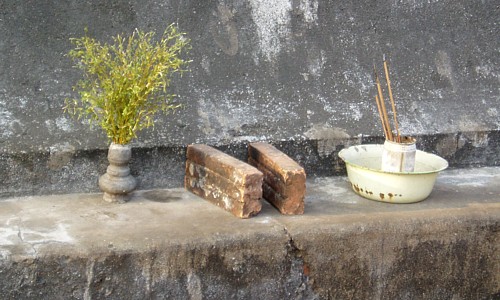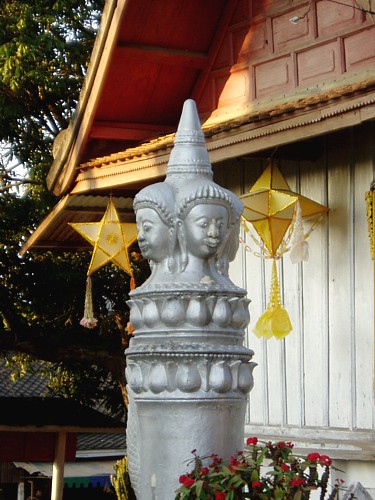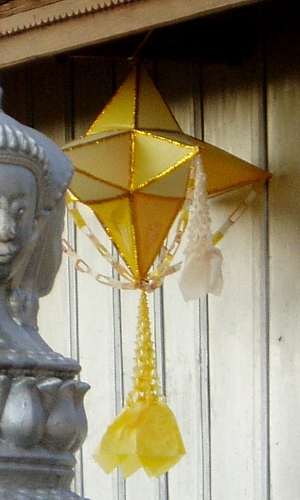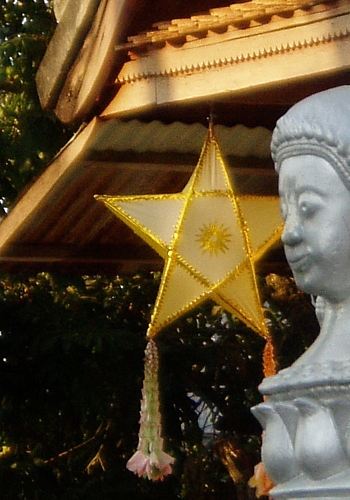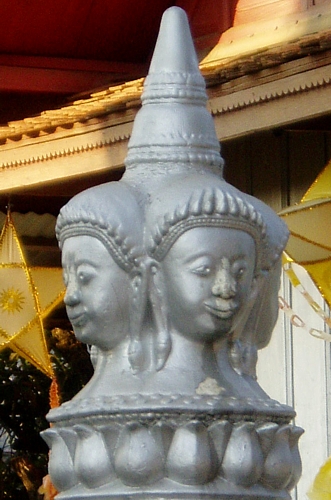...is named after:
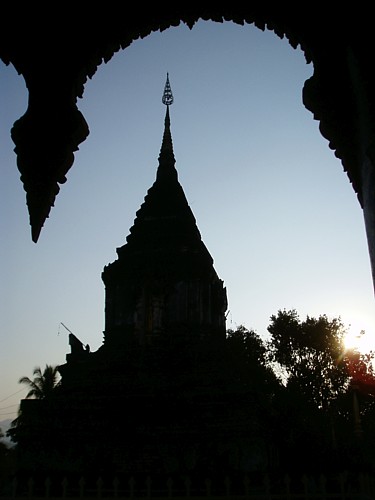
That (ທາດ) =
stupa,
chedi (เจดีย์) or
chorten, a
structure for enshrining sacred relics of the Buddha or remains of highly revered monks or royalty, marking the
eight great deeds accomplished during the Buddha's life, or containing Buddha images & amulets (e.g.
Wat Klang Wiang, Chiangrai).
Lao-style stupas are described as having the shape of an elongated lotus bud, like
this (That Phanom, Nakhon Phanom in Thailand) &
this (
That Luang, Vientiane). The cat has seen
other shapes like
this (Wat Sing Jai, Muang Sing), plenty of smooth bell-shaped ones in Bangkok, & this one seems rather squarish like some in North Thailand:
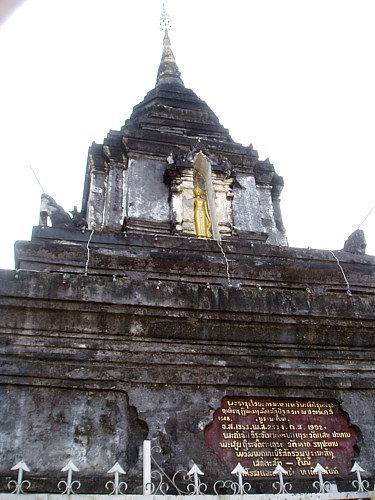
With help from a
consultant & a dictionary...
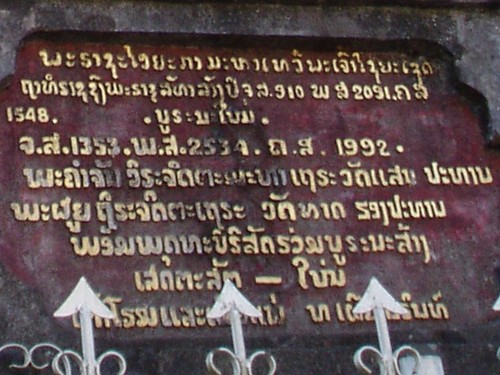 pharasa ai ya pha Maha Thewi King Saiyaset-
pharasa ai ya pha Maha Thewi King Saiyaset-
thathirat...built year 910 CS 2091 BE
1548 AD .restore new.
1353 CS 2534 BE 1992 AD
Pha Khamchan Virajitta Mahathera Wat Saen chairman
Pha Phuy Thirajita Thera Wat That vice-chairman
together...combine restore build
... - new
... (blocked by spikes) ...Maha Thewi (มหาเทวี) is probably Queen Yudhi Karma Devi aka. Yotkamtip, the daughter of Lanna King Ket Klao (พระเมืองเกษเกล้า) from Chiangmai who became the
first of five wives of King Photisarat. King Saiyasetthathirat (Sai Setthathilat) is the guy who built two of the most famous tourist sites in Laos -
Wat Xieng Thong in Luang Prabang & That Luang in Vientiane (the statue sitting in front of it is that of him). The dates are written in three forms - 'jor sor' (ຈ.ສ. or จุลศักราช) or
Chulasakarat (CS, still used in Burma), 'phor sor' (พุทธศักราช) or
Buddhasakarat (BE, Buddhist Era, used in Thailand & Laos), & 'khor sor' (คริสต์ศักราช) or Khritsakarat (AD, Christian Era/Anno Domini).
The consultant's translation has it that the 'beaulder' [sic] of this stupa is Maha Thewi...while this
source says that the stupa was built by King Photisarat, her father-in-law...& another source (
Ancient Luang Prabang by Denise Heywood) says that it was built in honour of her. Then again, some of the terms associated with royalty are kinda alien to the consultant (born 11 years after the Communist takeover of Laos), & the spelling of some words written by older generation Lao do not tally with the 'modernised' spellings that he learnt in school, so translation was not that straightforward.
Venerable Pha Khamchan Virajitta Mahathera (Great Elder) was the abbot of Wat Saen & provincial patriach of the Luang Prabang sangha, who would
pass away in July 2007. A former novice monk of Wat Saen (cousin of a cousin of the abovementioned consultant) said that the Elder was most highly respected for devoting 66 years of his life to Buddhism. He was strict, but that former novice is deeply grateful for the discipline & enforced 'study time', which kept him from turning wayward & allowed him to make it to college. Many tourists have photographed the Elder as he led what tour brochures term 'the longest line of monks' during the morning alms round everyday without fail, unless he was too ill or not in town. A few tourists ended up photographing his
funeral procession to the
cremation ground at
Wat That Luang.

Offerings at the base of the stupa:
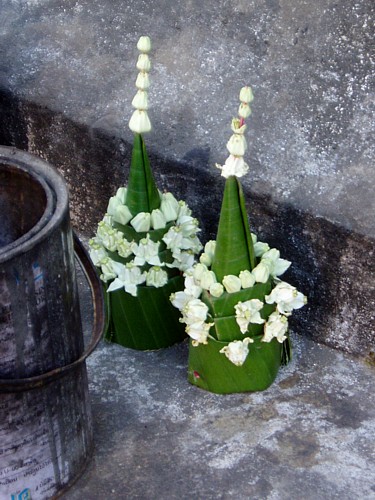
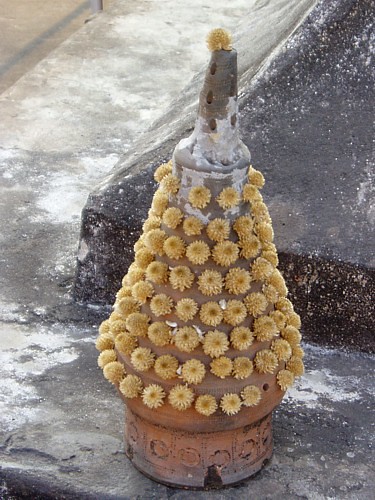
Don't know why the incense sticks are in pairs...Chinese use this number for paying respects to the deceased...
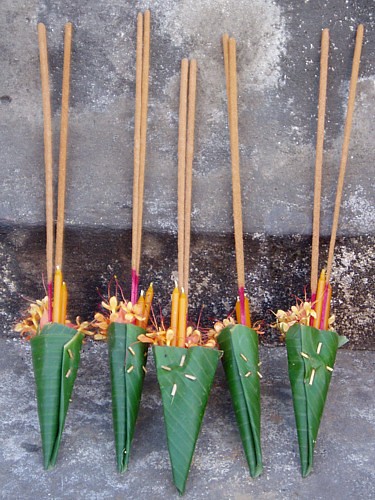
Recycling of aluminum drink can:
